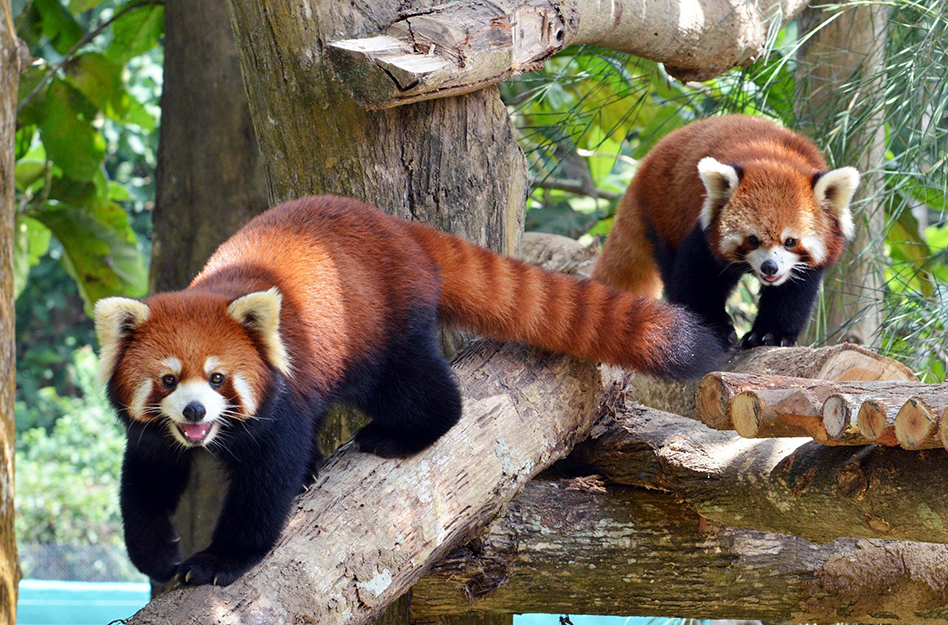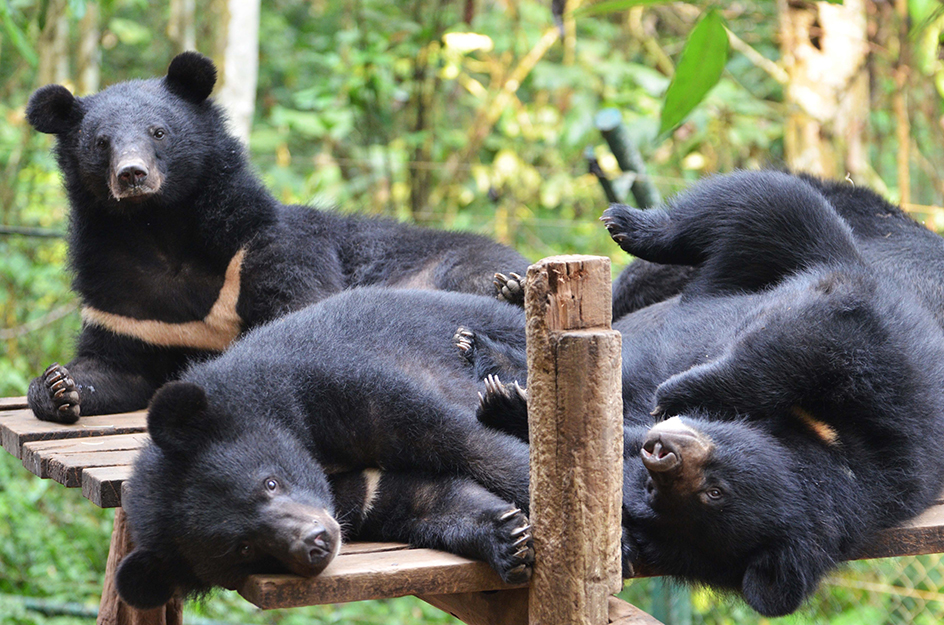Helping bears is barely a small job.
Most of us have little to do with bears. We love Winnie the Pooh, but what about the ursine creatures from the rugged mountains of Laos?
Along the main footpath leading to Kouang Si waterfall, visitors are able to view rescued bears feeding, playing and resting in their forest enclosures at the Free the Bears Tat Kouang Si Bear Rescue Centre. Visitors can learn of the cruel bear bile trade and the history and current work of the Australian non-profit charity. Free the Bears (FTB) also offers wildlife fans the chance to go behind the scenes with a Bear Care Tour. The Bear Care Tour provides guests the opportunity to learn more about what it takes to care for the bears. Participants learn about individual bears and then challenge the foraging skills of the bears by making enrichment and hiding food in the forest enclosures.

Established in 2003, the Rescue Centre is 23km outside of Luang Prabang. There are currently over 30 moon bears at the rescue center, ranging from cubs to fully grown adults, all of which have the distinctive white V crescent on their chests from which their name is derived. Moon bears, also known as Asiatic black bears, are classed as a vulnerable species by the International Union for Conservation of Nature (IUCN). In Laos, their numbers are threatened by bile farms and the illegal wildlife trade. Bile farming is a cruel practice which sees bears confined to tiny cages throughout their lifetime, and bile removed daily from the gallbladders using a catheter. Moon bears are also killed for parts and traditional medicine and some are kept as “trophy” pets or used in restaurants and shops to lure visitors.

Nikki Brown, FTB’s Laos Education Technical Advisor, tells me that all of the sanctuary animals are rescued from the illegal wildlife trade. She informs me “There are still around 120 bears kept in illegal bile farms, or as pets, in Laos.” The Lao Department of Forestry Inspection and FTB are working closely to try to end this practice. Bear bile is used in traditional medicine claimed to help various ailments including aches and pains, headaches, fevers, inflammation, liver disease, and to dissolve gallstones, although there is no scientific evidence to support these claims. Nikki says, “there are many safer, cheaper and more effective remedies that could be taken, including herbal medicines and over the counter medicines”. Korean, Vietnamese, and Chinese people are the main buyers of bile and new information in these languages has been printed at Kouang Si for natives of these countries to read. Yet by November 2019, FTB had already rescued 17 bears, a record year of Lao rescues for the charity.
With the growing numbers of bear rescues over the past 4 years, it became clear that FTB needed to expand in Laos. In 2017 the Luang Prabang Wildlife Sanctuary (LPWS) was opened. The sanctuary will house up to 150 bears and also provides facilities for other rescued and endangered species affected by the illegal wildlife trade including macaques, leopard cats, birds, civets, and red pandas, rescued after being smuggled from China into Laos. Nikki informs me “The new site also features a Wildlife Hospital and we are currently completing a Quarantine House and Cub Nursery. In the future, we will have accommodation for volunteers to stay and help care for the bears and other wildlife.”

After learning all the information about FTB and its work in Laos, Nikki introduced me to some of the rescued bears. Moonie McGuinness suffered a snare injury on her right foot and has no claws; Bindi was found inside a plastic tube on the back of a motorbike; Brenda and Beryl were rescued as two-month-old cubs – confiscated from villagers by the police.
When I joined the Bear Care Tour, I worked with Nikki and the team to prepare and hide the food in one of the enclosures. We wrapped dog biscuits, sunflower seeds, and peanuts in large leaves, securing them tightly with the stalk, then hid them around the enclosure.
We then witnessed the feeding frenzy from a platform overlooking the compound, laughing as they tumbled in to hunt for the nutritious leaf ball snacks. The bears stood up, shaking poles to dislodge the food, and clambered quickly up onto the platforms in search of pumpkin, parsnip, and sweet potato.
The Bear Care Tour is an experience I would definitely recommend during any stay in Luang Prabang, and 100% of the money helps Free the Bears to continue its essential work to rescue the bears of SE Asia kept illegally as pets or in bile farms, as well as help look after the bears currently under their care.
GETTING THERE
Lao Airlines has daily flights to Luang Prabang. The Tat Kouang Si Bear Rescue Centre is located about 30 km southwest of the city at Kouang Si Falls.
MORE INFO
For more information on the Bear Care Tour and to book please visit freethebears.org/pages/bear-care-tour-laos
Text BY Claire Boobbyer
PHOTOGRAPHS BY Free the Bears



 ລາວ
ລາວ
